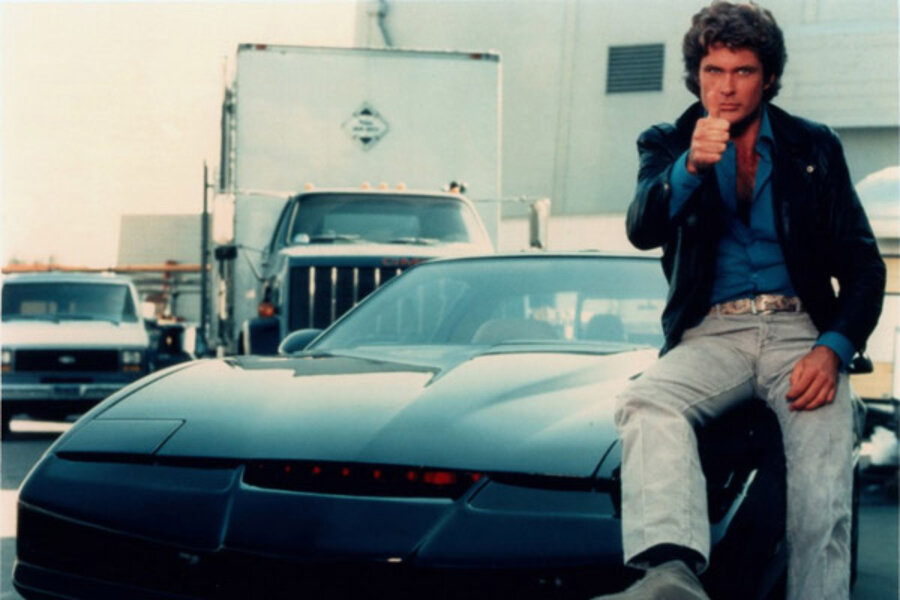Cars that 'talk' could make driving safer
Loading...
Vehicle-to-vehicle communications systems will make automotive travel dramatically safer and more efficient. So, what's the big holdup? The National Highway Traffic Safety Administration, which has yet to determine when V2V will be required on new passenger vehicles.
At long last, however, the agency is moving in that direction: at a press conference yesterday, NHTSA reps said that the V2V mandate could come within the next couple of years.
A V2V RECAP
Vehicle-to-vehicle systems essentially allow vehicles to talk to one another, exchanging data like speed and position as frequently as ten times per second. The implications are profound.
Say, for example, that you're at an intersection, and your light has just turned green. You've just tapped the accelerator, when your car tells you to stop because another vehicle -- possibly a police car, or maybe someone who tried to beat the yellow light and missed -- is about to enter the intersection. You hit the brake, the other car zips past, and then you're on your way, no worse for wear.
If you hadn't had a V2V system on your car, you might not have noticed the other vehicle until it was too late. But because both your cars were equipped with V2V, you avoided a potentially nasty accident. Authorities estimate that up to 81 percent of all accidents could be prevented by V2V systems.
What's more, V2V can help smooth the flow of traffic, because it taps into the surrounding infrastructure (though that's sometimes considered a separate system, dubbed V2I). For example, if a light is malfunctioning, or if there's a traffic jam ahead, sensors embedded in streetlamps, stop signs, and other infrastructure elements can communicate with cars via V2V systems and suggest alternate, less crowded routes.
V2V is also important because it facilitates the rollout of autonomous vehicles. After all, there's only so much that cars can do when they operate in a vacuum. When they're networked, talking to one another, they can interact more efficiently -- which is exactly what autonomous cars need to achieve their full potential.
Of course, there are downsides, to V2V -- namely, it creates a network of cars, and anytime there's a network, it's vulnerable to hacking. To most minds, however, the opportunities of V2V outweigh the threats. After all, the internet brought hacking to home and office computers: should we have outlawed the internet and all it's offered just because we were afraid of hackers? Unfortunately, it's just one of the risks we take.
YESTERDAY'S ANNOUNCEMENT
In Washington, D.C. on Monday, NHTSA officials said that they had begun working on a timetable for the rollout of V2V. That shouldn't come as much of a surprise: in 2011, the Department of Transportation began conducting real-world tests of the technology in six major U.S. cities.
NHTSA is finishing up a report on those tests -- with recommendations -- which should be released in the coming weeks. The recommendations probably won't include a hard-and-fast rollout schedule for V2V, but that's the next step.
NHTSA's Acting Administrator, David Friedman, is highly optimistic about the possibilities enabled by V2V:
"V2V crash avoidance technology has game-changing potential to significantly reduce the number of crashes, injuries and deaths on our nation's roads. Decades from now, it's likely we'll look back at this time period as one in which the historical arc of transportation safety considerably changed for the better, similar to the introduction of standards for seat belts, airbags, and electronic stability control technology."
OUR TAKE
We agree with Friedman: V2V is a game-changer. It promises to improve auto safety dramatically, and it speeds the arrival of autonomous cars (which are coming, whether you like it or not).
Our biggest concerns about V2V are:
1) Its cost to consumers: We expect that by the time V2V debuts, the technology will have become exponentially less expensive than it would be today, but undoubtedly, it'll have some effect on the price of new cars. Will it be a few hundred bucks? A thousand? And will consumers balk at the price hike, or will they see it as a wash, when weighed against the cost of collision repairs and medical bills that V2V might help them avoid?
2) Its effectiveness: Obviously, V2V won't really be useful until a significant number of cars on the road have the technology. What counts as a "significant number"? Similar studies of autonomous vehicles claim that consumers will feel the effect when just ten percent of cars are self-driving. Does that figure hold true for V2V, too? If not, what's the tipping point?
3) Its vulnerability to hackers and effect on privacy: What safeguards will NHTSA demand in order to prevent our vehicles from being hacked? And what will drivers give up in the way of privacy when our cars become networked?
4) Its vulnerability to politicians: Other NHTSA regulations -- like the one mandating back-up cameras on all new cars -- have been stalled for political reasons. Will foes of regulation put up a fight to stall the roll-out of V2V? How long will they fight the inevitable?







